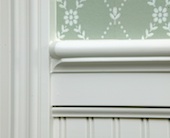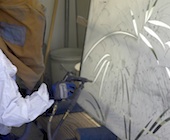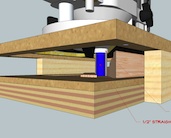Back in the mid-1980s, my brother and I were growing tired of installing 1 1/2-in. clamshell casing, and 2 1/2-in. streamline baseboard. As finish contractors, that’s all we did on every job, day after day (after we had installed the doors and windows). By then we’d nailed off miles of small trim in thousands of apartments and hundreds of single-family homes. The market was starting to soften up about that time, and one of the contractors we worked for needed an edge against other spec builders in the same subdivision. We suggested upgrading the moldings in one of his homes. Not the whole house, mind you, only the first floor. We told him we’d do it for our cost, just to prove a point. Read the full article…








